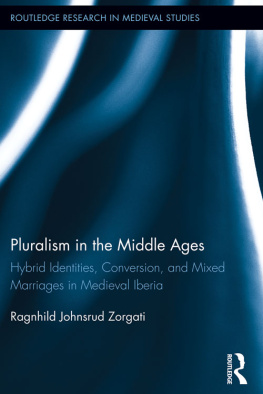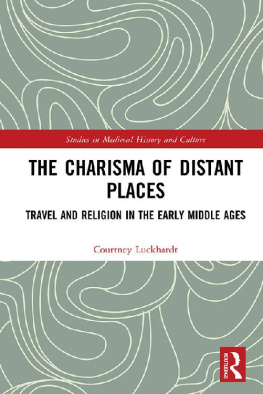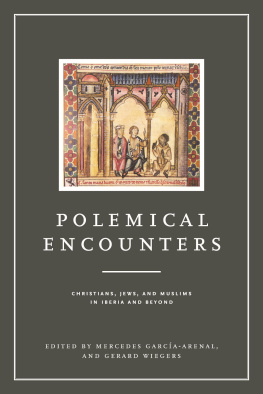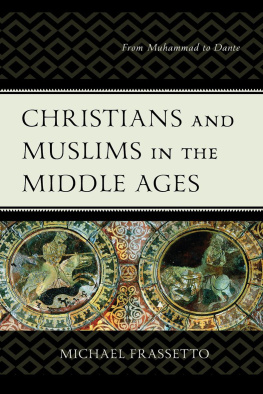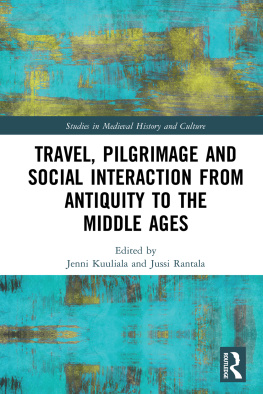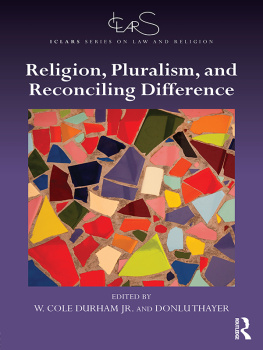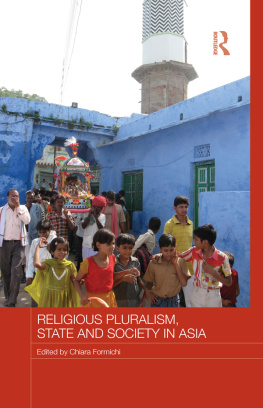Pluralism in the Middle Ages
Routledge Research in Medieval Studies
1. Agrarian Change and Crisis in Europe, 1200-1500
Edited by Harry Kitsikopoulos
2. Pluralism in the Middle Ages
Hybrid Identities, Conversion, and Mixed Marriages in Medieval Iberia
Ragnhild Johnsrud Zorgati
Pluralism in the Middle Ages
Hybrid Identities, Conversion, and Mixed Marriages in Medieval Iberia
Ragnhild Johnsrud Zorgati
First published 2012
by Routledge
711 Third Ave, New York, NY 10017
Simultaneously published in the UK
by Routledge
2 Park Square, Milton Park, Abingdon, Oxon OX14 4RN
Routledge is an imprint of the Taylor & Francis Group,
an informa business
2012 Taylor & Francis
Typeset in Sabon by IBT Global.
Printed and bound in the United States of America on acid-free paper by
IBT Global.
All rights reserved. No part of this book may be reprinted or reproduced or utilised in any form or by any electronic, mechanical, or other means, now known or hereafter invented, including photocopying and recording, or in any information storage or retrieval system, without permission in writing from the publishers.
Trademark Notice: Product or corporate names may be trademarks or registered trademarks, and are used only for identification and explanation without intent to infringe.
Library of Congress Cataloging-in-Publication Data
Zorgati, Ragnhild Johnsrud. 1972
Pluralism in the Middle Ages : hybrid identities, conversion, and mixed marriages in medieval Iberia / by Ragnhild Johnsrud Zorgati.
p. cm. (Routledge research in medieval studies ; 2)
Includes bibliographical references (p. ) and index.
1. SpainReligion. 2. Identification (Religion)History of doctrinesMiddle Ages, 600-1500. 3. ConversionHistory of doctrinesMiddle Ages, 600-1500. 4. Interfaith marriageSpain HistoryTo 1500. 5. Christianity and other religionsSpain.
6. IslamRelations. 7. JudaismRelations. I. Title.
BL980.S7Z67 2011
261.209460902dc22
2011015309
ISBN: [978-0-415-88131-9] (hbk)
ISBN: [978-0-203-80047-8] (ebk)
For Sophia, Nora and Hichem
Contents
Acknowledgments
This book began as a doctoral dissertation, and several scholars have contributed to its completion. I would like to express my warm gratitude to Professor Saphinaz-Amal Naguib, who supervised my research with encouragement, positive comments, and inspiring ideas. I am also grateful to Professor Amaryll Chanady at the University of Montreal, who played an important role during the initial period of this research project. Moreover, I thank Professor Janina M. Safran, Professor John V. Tolan, and Professor Knut Aukrust, who constituted my dissertation committee. Their comments and suggestions were of great value. My gratitude also goes to Professor Anne Eriksen and Professor Arne Bugge Amundsen who agreed to read the manuscript at an early stage. I would also like to thank Nellie Hogikyan, Delphine Bnzet, Frank Runcie, and Sbastien Ct for their support during the initial period of the research project. Nadia Wardah and Amund Bjrsns gave valuable help with translations from the Arabic. I am grateful to the Faculty of Humanities at the University of Oslo for providing me with a doctoral fellowship which enabled me to carry out and complete the research that resulted in this book.
Introduction
Culture Contact in Medieval Iberia
Mon cur est devenu capable de toute forme, disait Ibn Arabi, il est un pturage pour les gazelles et un couvent pour les moines chrtiens, et un temple pour les idoles, et la kaaba du plerin, et la Thorah et le livre du Qorn. Je suis la religion de lAmour, quelque route que prennent ses chameaux; ma religion et ma foi sont la vraie religion.
The epigraph above, from a twelfth-century Andalusian Sufi, Ibn Arab (11651240), demonstrates how mystical synthesis transcends the boundaries of traditionally defined religious belonging. Ibn Arabs heart embraces the three monotheistic religions as well as expressions of paganism. This transcendence, which ignores boundaries between religions, represents, however, a particular point of view, for whereas Ibn Arab preaches the allembracing religion of Love, most contemporary voices defended the opposite conception of religion and religious identity. Most representatives of the elites of all the three monotheistic religions present in the Iberian Peninsula from the eighth to the fifteenth century thought of their religion as the only true religion, and they defended it vigorously with the pen and the sword. Their conception of identity mainly went along religious lines, and a person was defined according to his or her religious affiliation. People should stick to their group or community and respect the boundaries imposed on them. Consequently, activity that crossed such boundaries and that could lead to mingling and mixture between religious groups was condemned. Many of the voices of which we have testimony sought and defended the purity of their own tradition and rejected the mtis and hybrid. Nevertheless, we can read between the lines that the presence of other traditions and mores existed close at hand. Emphasis on purity and exclusiveness may well have been a reaction to practices that disrespected such categories. Moreover, even in some particularly interesting passages of the texts themselves, we find the presence of the other voice as an undermining, deconstructive element.
The objective of this book is, consequently, on the one hand to investigate discourses that construct boundaries between persons of different religious belonging and to clarify the motives for such constructions. The concepts of purity, heritage, and tradition are central to this investigation. On the other hand, the work examines textual examples of mixture and hybridity, namely moments of transculturation which go beyond the imposed boundaries. In so doing, it draws on Thomas F. Glicks idea of boundary-maintaining mechanisms, a concept that will be explained below. Moreover, it utilizes insights from Christine E. Hayes study of purity categories related to the gentile in biblical and rabbinical sources. As a matter of fact, Hayes demonstrates, first, that the Israelite communitys conceptions of gentile (im)purity changed over time and, second, that there was a connection between the kind of impurity attributed to gentiles (whether the gentile was considered ritually, morally, or genealogically impure) and the attitude the community took on issues such as conversion and mixed marriages. For instance, during periods in which the gentile was considered genealogically impure, his or her entry into the Israelite community was impossible, since the impurity was naturally inherent and therefore irremovable. Conversion to Judaism or intermarriage with an Israelite was therefore not allowed. Only Jews born of Jews were Jews. In times in which the impurity was thought of in ritual or moral terms, it was in principle removable (through ritual cleansing or moral repentance), and the gentile could therefore make his or her entry into the Israelite community through conversion or intermarriage. In defining the boundary which resulted from the second interpretation of purity as more permeable than the one which stemmed from the first, Hayes is able to conclude that Jews exhibit very different attitudes towards the process by which group boundaries are penetrated intermarriage and conversion (Hayes, 2002, 4). She introduces the notion of permeability of cultures and affirms that conversion and intermarriage represent the two processes by which such permeability is ultimately measured. Thus, it would be possible to study the extent to which a culture represents a closed or open system by examining the attitude it takes on conversion and mixed marriages.

